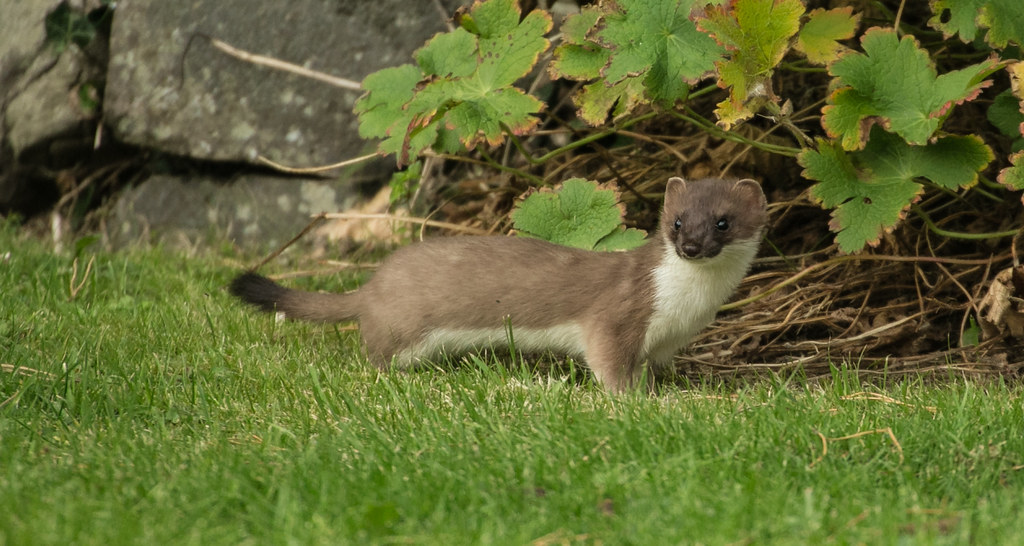Scientific name: Mustela erminea
Family: Mustelidae
Appearance: Stoats have a long, thin physique. They are brown with white underparts and a black tip to the tail, which distinguishes them from their smaller relative, the weasel.
Size: Body length: 17-32 cm Tail length: 6.5-12 cm Weight: 180-250 g
Natural history: Stoats occupy small territories, around 200m by 200m, in farmland, woods and heaths. They are largely carnivorous, and hunt by day or night. Stoats can take prey much larger than themselves, such as rabbits. Being small, they are often prey for hawks, owls and larger mammalian predators.
Especially in the north, stoats’ fur turns white in winter to camouflage them against the snow. This white pelt, known as ermine, was prized in medieval times and worn often by royalty.
Stoats have one litter of six to twelve young each year. Their lifespan is up to ten years, but typically under two.
Stoats have been widely introduced elsewhere in an attempt to control other invasive species such as rabbits. These introduction programmes have typically been disastrous failures: many target regions have never seen mammalian predators before, so naïve native species make easy prey for stoats and native populations have collapsed as a result.

(C) Rhona Anderson Wildlife & Nature Photography (shared under a CC BY-NC-ND 2.0 license)

 English (United Kingdom)
English (United Kingdom)  Czech (Čeština)
Czech (Čeština)  Nederlands (nl-NL)
Nederlands (nl-NL)  Magyar
Magyar  Deutsch (Deutschland)
Deutsch (Deutschland)  Croatian (Hrvatski)
Croatian (Hrvatski)  Polski (PL)
Polski (PL)  Español (España)
Español (España)